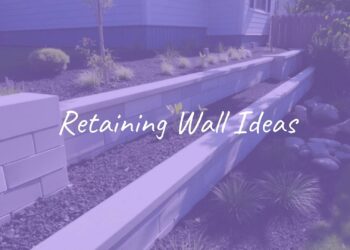Good garage storage ideas are simple ways to turn a messy garage into a tidy, useful space where you can store things and still park your car. The main idea is to use wall and ceiling space, sort items into groups, and set up easy systems so you can find what you need fast and keep it that way. Give everything a clear home, and daily tasks get easier.
Though many people treat the garage like a catch-all area, a well-organized one helps your whole home run better. It keeps clutter from spreading inside and makes tools, sports gear, and seasonal items easy to grab. Changing a garage from a disaster zone to a neat, working space takes effort, but the payoff in time saved and less stress is huge. Build a setup that fits your life-whether you love DIY, have lots of sports gear, or just want room to park.

Maximizing Available Garage Space
Making the most of garage space starts with smart use, not stuffing. Think up, not out. Walls and ceilings offer a lot of room you may be missing. Wall shelves, cabinets, pegboards, and slat walls lift items off the floor and create open space. Overhead racks hold seasonal or rare-use items so the floor stays clear.
Also look at the footprint of what you use. Tall, narrow shelves or modular units that fit tight corners beat random piles. Pick stackable bins and add clear labels so every bit of space works hard and you can see what you have. Give each item a real spot, not a vague area, and the garage will stay neat and easy to use.
Common Garage Storage Challenges
Garages are tough to organize because they hold lots of different, odd-shaped things-power tools, yard gear, sports items, and holiday decor. One system rarely fits all sizes and shapes.
Another big issue is the “dumping ground” habit. When items lack a clear home, they end up in the garage and pile up. Soon, you can’t even park. Since garages aren’t usually built for looks, people feel less motivated to keep them tidy. Dust and dirt don’t help either. Solving these problems takes a plan that focuses on function, easy access, and sturdy materials.
How to Plan an Organized Garage Layout
Think of your garage layout like a small system in your home. Start with a clear plan based on what you own, how you use it, and the size of the space. Don’t buy shelves first. Begin with a simple review and a goal. Without a plan, even good products won’t fix clutter for long.
Picture your ideal setup. Do you want both cars inside? Do you need a workspace? Do you want fast access to seasonal items? Your answers guide your layout so it truly supports your day-to-day life. The aim is smart storage that makes the garage an extension of your home.
Setting Garage Zones for Tools, Sports, Lawn Care, and More
Create zones by grouping similar items. Make dedicated areas for tools, sports gear, lawn care, and more. For example, keep “lawn and garden” near the door for quick access, with the mower, hand tools, and hoses together. A “sports” zone can hold bikes, balls, and pads, with hooks to air out gear.
Zones save time and make putting things away easier. Place items you use often within reach, and store seasonal or rare-use items higher up or out of the way. Smart placement helps your garage run smoothly for your family’s needs.

Measuring and Reviewing Storage Needs
Before you buy shelves or bins, take time to measure and review what you need to store. Do a full sort. Pull items out if you can and group them. Declutter as you go-toss expired stuff, fix what’s worth fixing, and make “keep,” “sell,” and “donate” piles. You’ll free up a lot of room right away.
Measure the items you’re keeping, especially bulky ones. Then measure the garage: wall lengths, ceiling height, and any windows or beams. Use this info to pick shelves, cabinets, and hanging systems that fit well and work with your items. Fit the storage to your stuff, not the other way around.
Creating an Access Plan for Everyday and Seasonal Items
Plan for easy access. Keep things you use often at eye level or lower. Put seasonal or rare-use items up high or on overhead racks.
If your kids use sports gear a lot, give them a low bin or shelf they can reach. Keep yard tools near the door if you use them weekly. Store holiday decor or winter gear higher up or on ceiling racks. Good placement cuts frustration and helps everyone put things back.
Types of Garage Storage Solutions
There are many garage storage options, each solving a different problem. From strong shelving that holds heavy loads to wall systems that use vertical space, you can mix and match based on what you own, your budget, and the look you want. A mix of types usually works best.
Use a tall freestanding shelf for paint cans, and a pegboard for small tools. Modern systems are modular, so you can build a setup that fits your needs now and later. Here are common choices and how they help.
| Storage Type | Best For | Notes |
|---|---|---|
| Wall shelves/cabinets | Tools, paint, chemicals | Gets items off floor; keep heavy items low |
| Freestanding shelves | Bulk items and totes | Metal units hold more weight |
| Overhead racks | Seasonal gear | Mount clear of door tracks and vehicles |
| Pegboards/slat walls | Hand tools, yard tools | Easy to re-arrange as needs change |
| Bins and baskets | Small parts, toys, extras | Label clearly |
Wall-Mounted Shelves and Cabinets
Wall shelves and cabinets use vertical space and clear the floor. You can install them high to add storage without taking up walking room. Systems like IKEA BOAXEL offer adjustable metal shelves that handle bulky items and hold up well in a garage.
Cabinets hide visual clutter like paint, cleaners, or chemicals and protect items from dust. Around a workbench, cabinets keep tools close and speed up projects. Pick adjustable shelves to fit different sizes, and choose coated finishes for longer life.
Freestanding and Rolling Shelving Units
If your walls can’t support mounting, freestanding and rolling shelves are great. Metal shelves from brands like Gladiator or IKEA BROR and OMAR carry heavy loads and beat flimsy plastic options.
Rolling units add flexibility. Casters let you move them to free space, change your layout, or bring supplies closer to the job. Some designs let you remove the bottom shelf to slide a mower or wheelbarrow under, using more of the height.
Ceiling Storage Racks and Overhead Bins
If floor and wall space are tight, look up. Overhead racks and bins are ideal for items you don’t need often-holiday decor, seasonal sports gear, camping supplies. Getting them off the floor opens room for cars and daily tools.
Overhead setups range from simple platforms to pulley lifts for bikes or totes. With exposed joists, you can add closet dowels or straps to hold light items like fabric rolls or folding chairs. Mount everything securely and keep clear of door tracks and where cars move.
Pegboards, Slat Walls, and Utility Rails
Pegboards, slat walls, and utility rails make flexible wall storage. Pegboards are perfect for light, small tools and supplies. Add hooks, shelves, and baskets, and change the layout anytime. IKEA SKÅDIS works well over a workbench or cleaning station.
Slat walls use grooved panels that accept heavy-duty hooks and shelves. They suit ladders, blowers, and bike tracks. They’re stronger than pegboards and can cover full walls. Utility rails like Gladiator tracks give you a sturdy base for hanging garden tools, sports gear, and more.

Hooks, Hangers, and French Cleats for Bulky Items
For big, awkward items-bikes, ladders, large yard tools-use hooks, hangers, and French cleats. They lift gear off the floor, cut tripping hazards, and open space. Mount hooks to studs or use track/slat systems for dedicated spots.
Get hooks that fit the job: bike hooks (vertical or horizontal), heavy-duty ladder hooks, and multi-tool hangers. Channel panels keep long-handled tools like rakes and shovels in line. French cleats give you a strong, flexible wall system for heavy tools and custom organizers.
Stackable Bins, Labeled Containers, and Baskets
Containment is the base of any tidy space. Stackable bins, labeled containers, and baskets group items, block dust and pests, and make it easy to grab what you need. Clear bins let you see contents at a glance; opaque bins hide visual clutter in busy areas.
Use stackable designs to save height inside shelves and cabinets. Labels matter-so everyone can find things and put them back. For often-used items, open baskets or mesh bins work well. Slim y-weave bins can even hold garbage bag rolls. The right container can fix many small storage headaches.
Workbenches and Modular Workstations
If you DIY, craft, or wrench on cars, a workbench or modular station is a must. It keeps tools close and projects tidy. Add drawers for small parts and a pegboard or magnetic strip above for hand tools.
Modular stations let you mix parts-potting area, tool storage, even a small desk-so the setup fits your hobbies and space. Rolling tool carts under the bench add portable storage. Put the station near outlets and give it a roomy surface with built-in storage to cut mess and save time.
Storage Lockers and Closed Cabinets
Use lockers and closed cabinets to protect items from dust, moisture, and curious hands. Enclosed storage hides clutter and looks clean. It’s great for chemicals, pricey tools, or anything you want out of sight.
Tall cabinets with adjustable shelves use the full height and hold many sizes-from bulk extras to coats. Old lockers can find new life in the garage, with sections for categories or even by family member. Add wood shelves inside to boost capacity. Closed storage keeps the space neat while keeping contents safe.
Vertical and Overhead Space: Making the Most of Garage Walls and Ceilings
Garages often get treated like flat spaces, but the walls and ceiling offer huge storage gains. If you skip them, you leave a lot of room unused. Use these areas to boost function, clear the floor, and turn a messy catch-all into a tidy, working part of your home.
This approach helps most in small garages, but it’s useful in bigger ones too. Pick systems and spots that balance access and safety. Here’s how to make your walls and ceiling do more.
Benefits of Vertical Organization for Small Garages
In small garages, going vertical is a must. When floor space is tight, store up the walls and overhead. You’ll fit far more without losing parking space or walking room. This keeps piles off the floor and stops the space from feeling cramped.
Wall shelves, pegboards, slat walls, and hooks lift tools and supplies, reduce clutter, and make things easier to see. Even a tiny garage can work well if you think vertically.
Examples of Overhead Storage for Rarely Used Items
Use ceiling racks for items you need a few times a year. Store holiday lights and decor, sleds, skis, kayaks, fishing gear, or camping items overhead. This clears prime wall and floor space.
Ceiling platforms hold large bins. Pulley systems can raise bikes or totes with little effort. With exposed joists, add dowels or straps for light items like camping chairs. Stow it out of the way so it’s there when you need it, and out of sight when you don’t.
Garage Wall Storage Ideas for Everyday Access
Use wall space for items you grab often. Keep them visible, reachable, and off the floor. Pegboards shine here for hand tools, gloves, paintbrushes, and more, especially over a workbench.
Slat walls and tracks handle heavier or awkward items like ladders, long-handled tools, or sports gear. Magnetic strips keep metal tools handy near a bench. Simple hooks tame hoses, cords, and even a wheelbarrow.
Garage Storage Ideas by Item Type
Different items need different storage. From tiny screws to big sports gear, use solutions that fit each type so they’re easy to find and put away. One setup won’t work for everything in a garage. Item-specific plans make the space efficient and simple to use.
When each item has a logical home based on size and use, your garage turns from a headache into a helpful, organized area. Here are ideas for common groups.
Tool Storage: Pegboards, Magnetic Strips, and Drawer Organizers
Tool storage works best with a mix. Pegboards keep daily hand tools in plain view. Use hooks for hammers, saws, and more. Magnetic strips over a bench hold wrenches, chisels, and screwdrivers so you don’t dig through drawers. Donnie, husband of author Abby Lawson, built “kits” like plumbing in one box and electrical in another, which sped up projects.
For nails, screws, and washers, use drawer organizers or clear tackle boxes. Old card catalogs or mini chests give tiny parts labeled homes. DIY ideas like PVC holders for screwdrivers or wooden bins under a bench also help. Give every tool a spot so you spend time working, not searching.
Bike and Sporting Equipment Storage Options
Bikes and sports gear can eat floor space. Get bikes off the ground with wall hooks, track systems with bike mounts (Gladiator has options), or ceiling pulleys. This opens space and stops bikes from tipping.
Set a sports “drop zone” with low shelves, open baskets, or mesh bins so everyone puts gear away. Abby Lawson used low IKEA BOAXEL shelves for her boys’ hockey gear. Add hooks to air out gloves and helmets. Use large bins or wall nets for balls. Store ski and snowboard gear together on sports panels, and use angled wire shelves for cleats.

Ladder and Large Yard Tool Storage
Hang ladders instead of leaning them. Use track mounts or heavy wall hooks to store ladders vertically or horizontally. For long ladders, hang near the ceiling or along a long wall.
Keep rakes, shovels, and hoes upright with a wall-mounted rack or slat wall hooks. Make a custom holder with PVC to line up long tools. Even wheelbarrows can hang from a simple cleat to free floor space.
Gardening Supplies and Potting Areas
Build a garden zone that works like an extra part of your yard. Hang hoses and tools on wall systems to stop tangles. Use a pegboard or slat wall for hand tools and gloves. Mount plastic window planters to hold sprays and small items.
Set up a potting bench or table with storage for soil, pots, and fertilizer. Keep seed packets in bins on shelves. A small trolley helps with potting and keeps mess contained. A repurposed golf bag can carry long tools and small gear in pockets. Add a bin for compost or a tray for muddy boots.
Paint, Hardware, and Small Parts Management
Keep paint on reachable shelves. Save space by pouring leftovers into stackable plastic kitchen containers and label color and sheen. A spice rack can hold small cans and spray paint so colors are easy to see. Heavy paint items belong on strong shelves to protect the floor.
Sort hardware into compartments. Clear tackle boxes, old card catalogs, or clear-lid spice jars on a magnetic strip make parts easy to spot. Build wooden bins under a bench or a swivel rack for bolts to keep things tidy. Visibility and sorting are the keys here.
Recycling, Waste, and Cleaning Supplies Zones
Dedicated spots for trash, recycling, and cleaning items make chores smoother. Choose square or rectangular bins so they sit tight against walls. If you use big 30-gallon cans, this shape helps a lot. Wheels make moving bins to the curb easier. Stackable dog food containers can work as labeled recycling bins.
Hang cleaning tools on a pegboard or slat wall. Mops, brooms, and dustpans can go on a simple holder made from scrap wood and pipe straps. Keep a cleaning caddy on top of a garage fridge for quick jobs, or use small bins for supplies on a shelf. Keep these items in one area so they’re quick to grab for the garage, car, or house.
Seasonal Clothing and Outdoor Gear Storage
Move off-season clothes and hand-me-downs to the garage to free closet space. Use clear, same-sized bins with lids and labels so you can identify items quickly. This keeps clothes clean and safe.
For camping gear, backpacks, and beach stuff, use overhead racks or high wall shelves. For seasonal sports gear like ski boots or wetsuits, keep them in the sports zone and move them higher when not in use. Store what you don’t need now up and out of the way, but still reachable when the season changes.
Kids’ Toys and Family Gear Storage
Keep family gear from taking over with simple setups. Use large, easy-to-reach bins or buckets for balls, scooters, and ride-ons. Inexpensive metal buckets with labels make pickup fast. Wire baskets or wall nets hold loose balls.
If you have room, add cubbies near the door so each person has a spot for shoes, backpacks, and sports bags. Mount shelves high enough so big ride-on toys can fit under them. The fewer steps it takes to put things away, the more kids will do it-so use open storage and easy lids for daily items.
Smart and Creative Garage Storage Hacks
Some of the best storage ideas come from simple DIY tricks. With a bit of creativity, you can turn everyday items into organizers for a lot less money. These projects let you build exactly what you need and give your garage a personal touch.
From reusing household items to building custom pieces, these hacks solve common problems and make every bit of space work harder.
DIY Storage Racks Using PVC, Wood Pallets, and Upcycled Items
Try low-cost materials for custom solutions. PVC pipes can hold long-handled tools like brooms, rakes, and shovels upright. Cut to size and mount to a board or wall.
Wood pallets can become tool holders with a bit of sanding and paint. Anchor them so they won’t tip. Build a wall-mounted swivel rack for bolts and screws from scrap wood, or make wooden bins under a bench sized to your needs. These projects save money and fit your space exactly.
Hidden Storage: Concealed Compartments and Floating Shelves
Hidden storage keeps the garage looking clean. Large cabinets that blend with the wall can hide chemicals, seasonal items, or even a messy bench. Curtains or folding doors are an easy way to hide cluttered spots or split the garage into zones.
Floating shelves keep a sleek look by hiding brackets. They hold items you use often without the bulk of big units. A handy trick: screw jar lids to the underside of a shelf and twist jars filled with nails, screws, and washers into them. Your small parts hang neatly out of the way.
Repurposed Household Items for Garage Organization
Shop your house before buying new. Turn an old filing cabinet on its back, add wheels, and use it as a rolling tool holder; attach a pegboard to the side for small items. Coffee cans with a slit in the lid dispense twine and rope. Soup cans on a magnetic strip hold pencils and small tools.
Use a spice rack for small paint cans and sprays. Mount metal tubs or buckets to hold hoses and extension cords. Clip a decorative basket to a pegboard for a supply caddy. Flat-backed feed buckets hung on the wall make a great car wash station. These ideas save money and add character.

Garage Storage Ideas for Small, One-Car, and Large Garages
Any garage can be efficient, no matter the size. The tricks change with the space you have. What works in a three-car garage may not fit in a one-car space. Learn your garage’s limits and strengths, then pick storage that fits. Make every inch count, whether you have a lot of room or very little.
Use smart, space-saving setups and zones that match your needs. The goal stays the same: control clutter, support your activities, and, if possible, keep parking space open.
Space-Saving Tips for Compact and One-Car Garages
In small garages, every inch matters. Often the main goal is parking. Use walls and ceilings aggressively. Wall shelves and cabinets get items off the floor. Pegboards and slat walls hold tools and small items so they don’t eat up bench or floor space.
Overhead racks store holiday and seasonal items. Mount bikes on walls or use ceiling pulleys. Pick folding yard tools and hang them on cleats. Choose square or rectangular trash and recycling bins so they sit flush against walls. Look for multi-use, compact options that add storage without bulk.
Multi-Function Storage for Family and Hobby Spaces
Many garages do double or triple duty: workshop, gym, gear hub, and play area. Use adaptable storage. Modular workstations can pair a bench with tool storage and even a small desk. Customize for carpentry, gardening, or other hobbies.
Create zones that can switch use. A sports drop zone with low bins can also hold kids’ outdoor toys. Adjustable shelves can change as your family’s needs change. Add cubbies near the entrance for shoes, bags, and coats to keep the house clear. Aim for flexible setups that support everything you do in the garage.
Ideas for Maximizing Large Garage Storage Potential
Big garages offer space but can still get messy. Use floor-to-ceiling storage and strong shelving like IKEA BROR or OMAR for bulk items, pantry overflow, or large tool sets. Add full slat wall sections to hang everything from yard tools to sports gear.
Build roomy zones: a workshop with a full bench and tool wall, a sports area, a full garden station, and a spot for seasonal items. Tall cabinets hide large amounts of supplies. Rolling shelves let you change layouts fast. Use the ceiling for long-term storage without getting in the way of daily tasks. Structure keeps a big space from becoming a big mess.
Labeling, Sorting, and Maintaining Garage Order
Getting organized is step one; keeping it that way takes labels, sorting, and routine care. Without these, even great systems fall apart. These habits turn a quick cleanup into long-lasting order, making the garage easy to use instead of a hassle.
Treat your garage like a library for your stuff. Give everything a place, a category, and a label. That way everyone in the home can help keep it tidy. Here are simple methods that work.
Labeling Strategies for Quick Retrieval
Labels turn guesswork into fast finds. Without labels, stacked bins become mysteries. Abby Lawson says labels are “both cute and practical,” and they help everyone return items to the right spot. Use bold labels from a label maker or a Cricut for durable tags.
For clear bins, a short front label works. For opaque bins, use a more detailed label with key contents. Label drawer fronts by tool type (“Plumbing Tools,” “Electrical Supplies”). On pegboards, outline tools so you know where they go. Aim for instant recognition.
Organizing Items into Categories and Zones
Group items into categories, then assign zones: garden tools together, sports gear together, car care in one place. Abby Lawson notes that “the garage (and any space!) will be much more functional if items are organized into zones with like items.” She carefully planned her zones before buying shelves so everything fit well.
Place items based on how you use the space. Yard tools near the garage door, seasonal items up high. Clear “neighborhoods” stop items from drifting and make cleanup fast.
Maintaining a Clutter-Free Garage Long Term
Keeping order takes steady habits. First, follow a “one in, one out” rule-when something new comes in, see if an old item can be donated, sold, or tossed. Next, put things away right after use to stop piles from forming.
Do quick declutters monthly or each season. Scan zones, update labels, and tweak storage if something isn’t working. If an item no longer fits its spot, decide if it stays or goes. An organized garage is a living system that needs small, regular tune-ups.
Frequently Asked Questions About Garage Storage Ideas
Even with a plan, questions come up. These common Q&As cover upkeep, access, and safety so your garage stays easy to use.
Here are direct answers that help you fine-tune your setup and keep it running well.
How Do I Keep My Garage Clutter-Free Year Round?
Start with a deep clean: remove anything broken, expired, or unused. Give everything a home. If something has no spot, make one or let it go.
Do a quick tidy monthly so messes don’t grow. Put items back right after use. Label well so everyone knows where things belong. Before bringing in something new, see if something old can leave. Stay proactive instead of waiting for clutter to build up.
Should Everyday Items Be Stored Lower or Higher?
Store daily items lower and seasonal items higher. This keeps the most-used things within easy reach. For kids, place gear on low shelves or in low bins so they can help put things away.
Holiday decor, off-season sports gear, and camping items can live on higher shelves or overhead racks. Save the best spots for what you use all the time.
What Safety Steps Are Important in Garage Storage?
Safety matters because garages hold tools, chemicals, and heavy items. Make sure shelves and wall systems are anchored well and rated for the load. Keep heavy items on lower shelves.
Store paints and chemicals in closed, preferably lockable cabinets, out of reach of kids and pets, and in original labeled containers. Keep the area with the chemicals aired out. Maintain clear walkways. Hang ladders securely instead of leaning them. Use bright, even lighting so you can see what you’re doing.
Practical Next Steps for Improving Your Garage Storage
You now have a plan-time to act. Don’t get stuck on all the options. Work step by step. Start small, celebrate wins, and build momentum. Progress builds fast once you begin.
Set aside a block of time, even a few weekend hours. Gather trash bags, donation boxes, and cleaning supplies. Tackle one wall or zone at a time. The first purge is the toughest but frees the most space. After that, you’ll know what storage you actually need and what you can DIY. A good garage setup isn’t just storage-it improves daily life and cuts stress. Take the first step and take back your garage!
















![What to with Scrap Metal? [infographic]?](https://facts-homes.com/wp-content/uploads/2019/07/645413-POPYOV-391-120x86.jpg)





